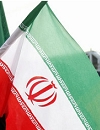 |
||
|
Russia to Use Nuclear Fleet in Arctic Rescue Missions RIA Novosti, PUBLISHED 07.06.2014 Russia's Emergency Ministry plans to use nuclear icebreakers for the first time in response to large-scale emergencies in the Russian Arctic. Recently, Russia has been actively developing its northern territories, including hydrocarbon production and the Northern Sea Route, which is to form an alternative to traditional oil transport routes from Europe to Asia. The total value of raw materials in the Russian Arctic is estimated at more than $30 trillion. There are already three functioning rescue centers in the Russian Arctic in Naryan-Mar, Arkhangelsk, Dudinka, four regional search and rescue teams, 196 fire and rescue departments from various agencies. Currently, approximately 10,000 staff man the stations, with two maritime rescue coordination centers in Murmansk and Dikson, three maritime rescue sub-centers in Arkhangelsk, Tiksi and Pevek, and four stations for oil spill disasters in Dikson, Tiksi, Pevek and Provideniya. Topics: Russia, Nuclear ships Other news: Russia May Sign Agreement to Build 8 Reactors in Iran A source close to the negotiations told journalists Thursday. Hungary Enacts Law to Expand Nuclear Power With Russian Aid Hungary’s president has signed a bill into law to expand a nuclear power plant in the country with Russian assistance. Hungary Lawmakers OK Russia Nuclear Plant Deal Russia will provide Hungary a loan of up to 10 billion euros ($13.5 billion) - around 80 percent of construction costs. |
Hero of the day 
We are currently working with the Nuclear Decommissioning Authority (NDA) on this approach, which was submitted in response to their February 2012 call for alternative proposals. We appreciate that the UK is in the early stages of their policy development activities and are pleased to be involved in such important work. INTERVIEW
Yanko Yanev OPINION
Joint Plan of Action |

